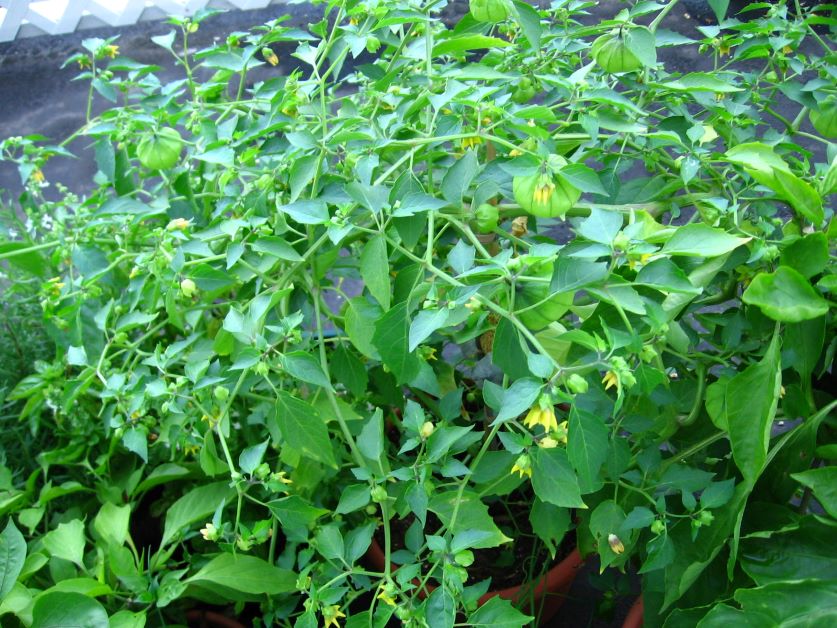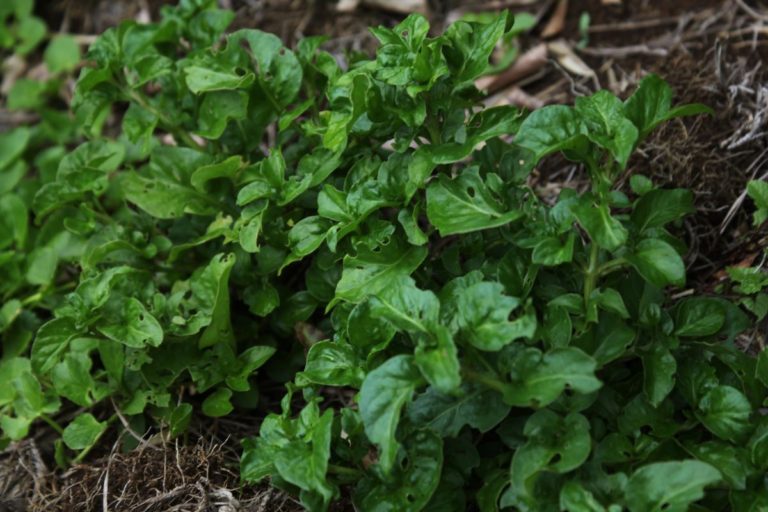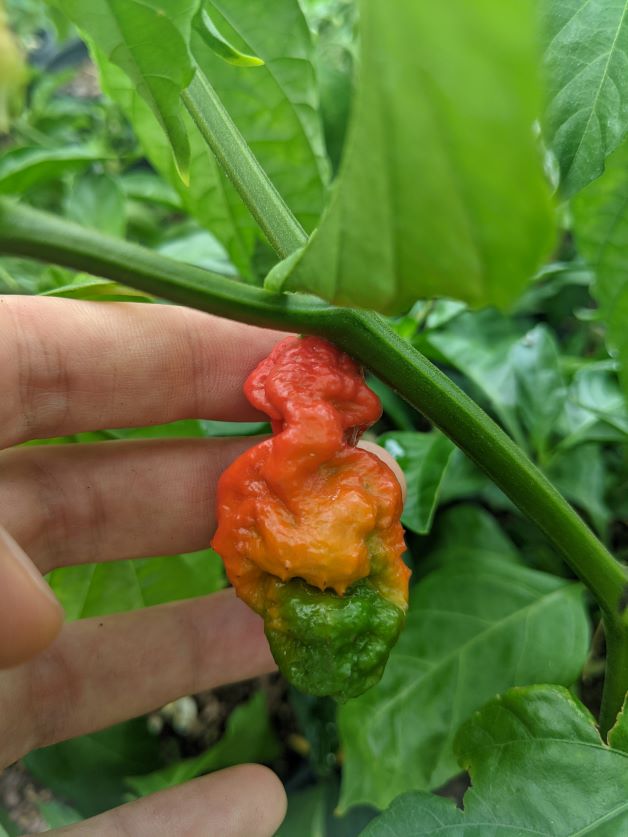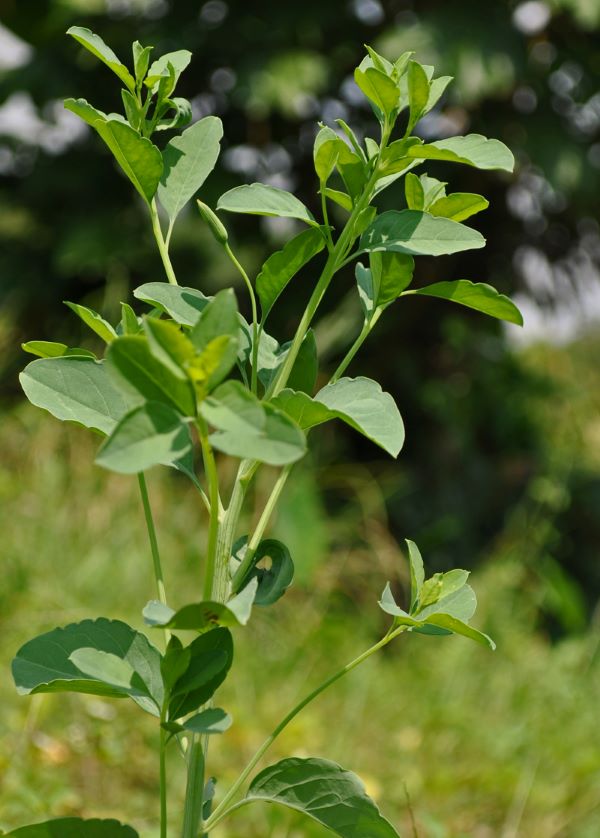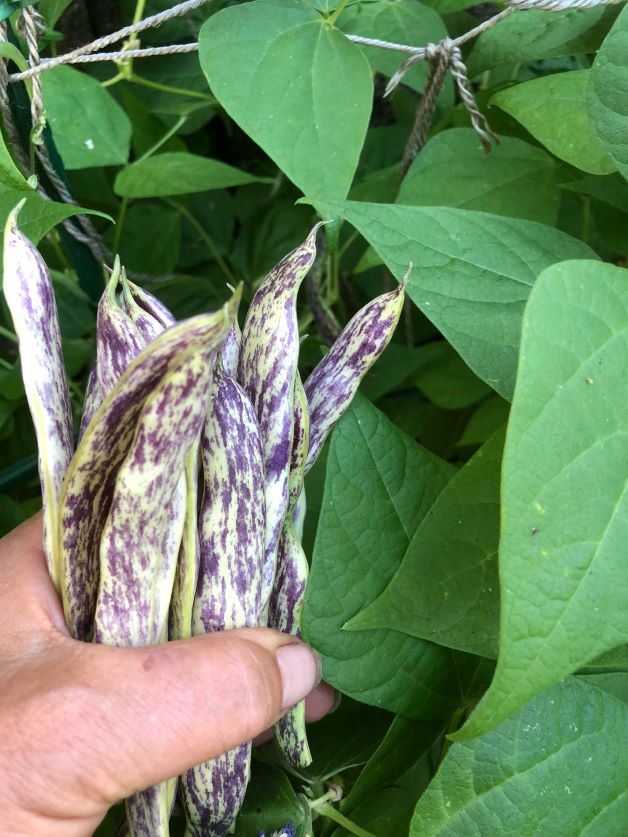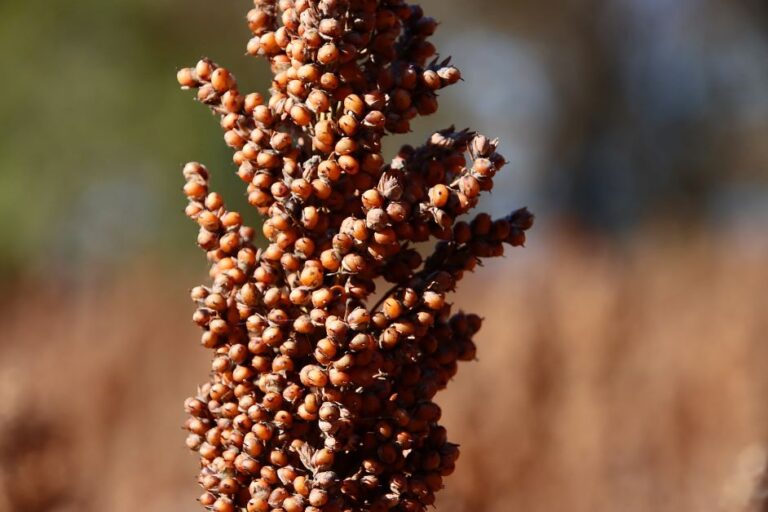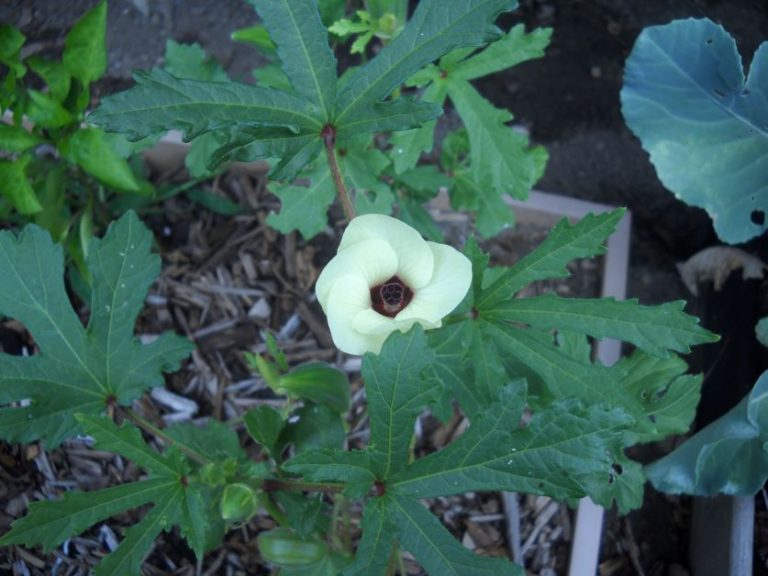How to Grow Tomatillos
My first attempt at growing tomatillos was a disaster.
I assumed that tomatillos are a Florida summer vegetable because they’re used in Mexican cuisine. In my mind, Mexican vegetable = needs extremely hot weather. I didn’t think to check the planting calendar because I was so confident (and let’s be honest, an uninformed noob).
It’s true that tomatillos do like it hot, but July in Central Florida is too much for the tomatillo to handle. My tomatillo started off strong in late spring and was dead by mid-summer.
Tomatillos are a high-yield crop, as long as they’re grown under the right conditions. Learn from my mistakes and harvest bushels of tomatillos this next growing season.
Is Tomatillo a Tomato?
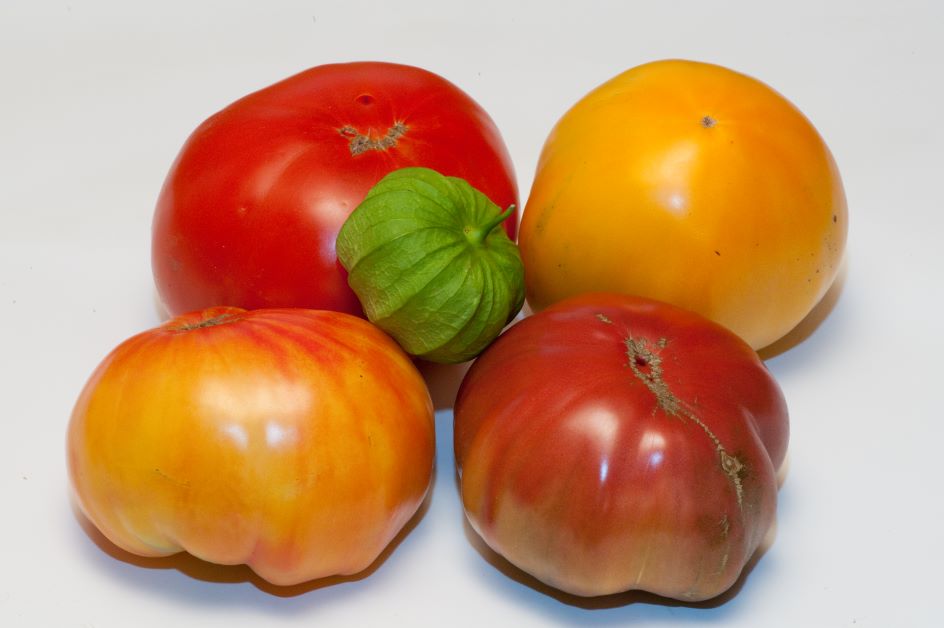 |
| Photo Credit: Dwight Sipler |
Tomatillo is also known as the Mexican husk tomato, Mexican ground cherry, and large-flowered tomato. They grow a lot like a tomato, but they’re surrounded by a papery husk, much like a groundcherry or cape gooseberry.
Tomatillos come in two colors, yellow and purple. The green variety is species Physalis philadelphica and the purple is Physalis ixocarpa.
If you pick them young, tomatillos are tart and taste like an unripe tomato. If you let them ripen on the vine for a little longer, they are sweeter but seedier. You can use a ripe tomatillo in the same way as you’d use a tomato.
When to Plant Tomatillo in Florida
Timing your planting right is maybe the most important part of a successful harvest. Tomatillos like it hot, but not “middle of the Florida summer” hot. They are also sensitive to cold weather, especially frost.
[table id=3 /]
If you’re in North or the upper part of Central Florida, you might need to cover your tomatillo plants with a tarp on extra cold nights.
How to Grow Tomatillo from Seed
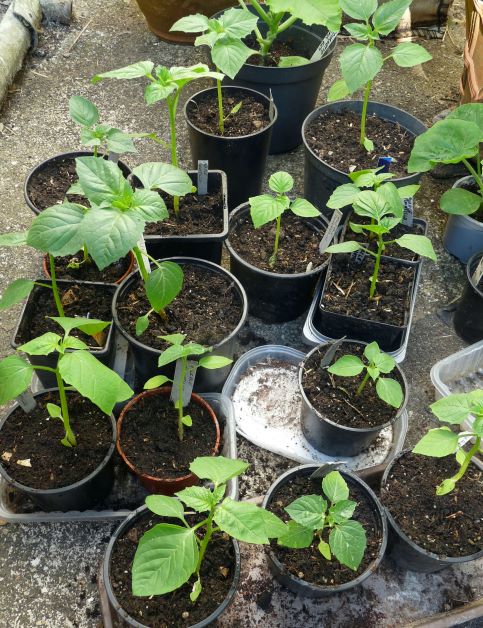 |
| Photo Credit: Karen Blakeman |
One important difference between tomatillos and tomatoes it that tomatillos don’t self-fertilize. That means you can’t grow just one tomatillo plant – you need two plants to fertilize each other to produce fruit.
To start your tomatillo seeds, fill a seed starter tray or starter cups with a high-quality potting mix. Plant your tomatillo seeds about ¼ an inch deep and water them in. Keep the tray in a warm, sunny spot, and only keep them outdoors after all danger of frost has passed. Keep your seeds moist but not soggy.
After your seeds have germinated and have at least 2 sets of leaves, you can transplant them. Remember that the first set of leaves that form on a seedling are called cotyledons, and aren’t considered “true” leaves. You need at least one more set after the cotyledons before you’re ready for transplanting.
Just like tomatoes, tomatillos should be planted deep. Plant them up to their first set of true leaves. The part of the stem that you’re burying will be where roots form and will help make your tomatillo sturdy.
Tomatillo Growing Conditions
Temperature and Light
The ideal temperature range for tomatillos is 77°F-90°F and will suffer when the temperature drops lower than 61°F.
Tomatillos are a full-sun plant, so make sure they get 6 to 8 hours of direct sunlight a day.
Water
Water your tomatillo like you would a tomato – don’t let it get too dry but don’t overwater it, either. 1 to 2 inches of water per week is best.
Soil
Tomatillo prefers fertile, sandy, well-draining soil. They also like soil that’s slightly acidic, with an ideal pH from 5.5 to 7.3. For more info on soil testing on how soil pH affects your garden, check out my comprehensive guide all about soil pH.
Spacing
Tomatillos are big and bushy, much bigger than a tomato. It grows to be about 3 to 6 feet tall and 3 to 4 feet wide. Keep each tomatillo plant at least 3 feet apart with rows 3 feet apart.
 |
| Photo Credit: Kelli Koob |
Fertilizing
There are two times in the growing season that you should fertilize your tomatillos.
Mix organic 10-10-10 fertilizer into your soil before you transplant.
After your first harvest, feed your tomatillo again but with organic 5-10-10 fertilizer. This will help your plant produce another wave of fruit.
Always follow the instructions on the back of the fertilizer package, and don’t over-fertilize. Over-fertilizing can burn your plants and cause them to grow a lot of leaves but few flowers.
Pruning
 |
| Photo Credit: Gerwin Sturm |
If you do prune, focus on removing the suckers. Suckers are the small shoots that grow where the main branches of your tomatillo meet. Always sanitize your sheers between plants if you’re pruning more than one, otherwise you can spread disease from one plant to another.
This video does an excellent job of explaining how to prune a tomato plant. Although tomatillos and tomatoes aren’t the same things, it’ll show you how to identify suckers and other pruning best practices.
Tomatillo Trellising
An easy way to support a tomatillo is by using a tomato cage. While your plant is still young, put a tomato cage around it and guide the branches through it as it grows. Don’t try to put your tomatillo in a cage if it’s fully grown or branchy, otherwise you might damage it as you force the cage over the plant.
 |
| Photo Credit: Kimberli |
If your plant is too big to fit inside a cage, then you can cut the cage in half to use it as a trellis. Using tin snips, cut the cage in half up the middle and straighten it out. This will form it into a fence structure. Put the opened tomato cage behind your tomatillo. Guide some of the back branches through the cage, using twine to attach the branches to the cage, if needed.
How to Harvest and Store Tomatillos
Tomatillos are ready to harvest 75 to 100 days after planting. You’ll know when the tomatillos are ready to pick when their papery husk splits open, exposing the fruit inside. Physalis philadelphica turns from green to yellow and Physalis ixocarpa starts green and turns purple.
The longer you leave your fruit on the plant, the sweeter it gets. The fruit can split if left too long or due to inconsistent watering, so keep an eye on your plants to pick your tomatillos at the right time.
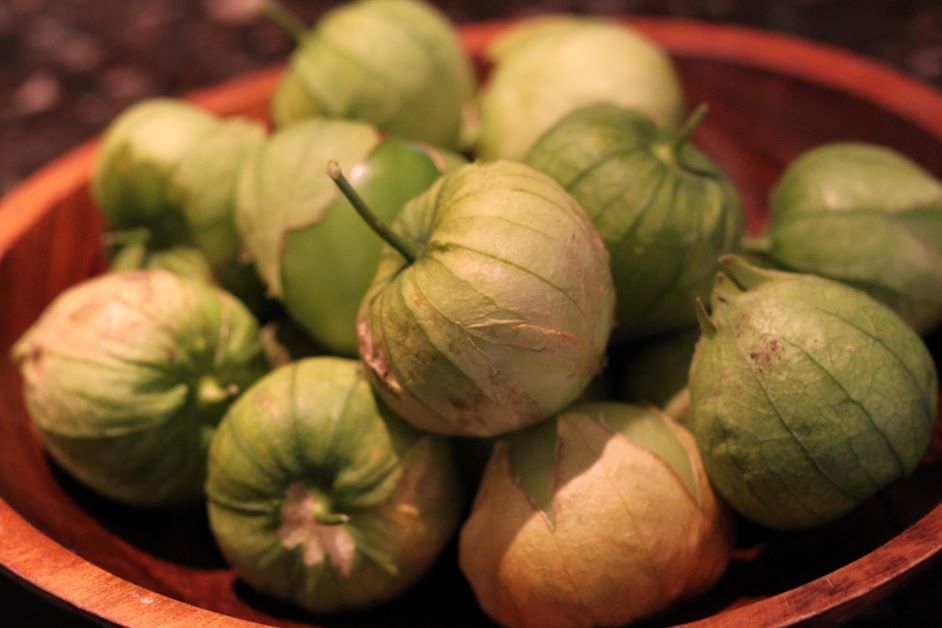 |
| Photo Credit: Keith McDuffee |
After you harvest your tomatillos, leave the husks intact until you’re ready to use them. Tomatillos will last 2 to 3 weeks in the refrigerator.
Before you eat your tomatillos, peel off the husk. You’ll notice that tomatillos are covered in a slightly sticky substance – this is normal. Just rub them gently under running tap water and your tomatillos are ready to use.
Tomatillo Troubleshooting
Pests
Ants and Aphids
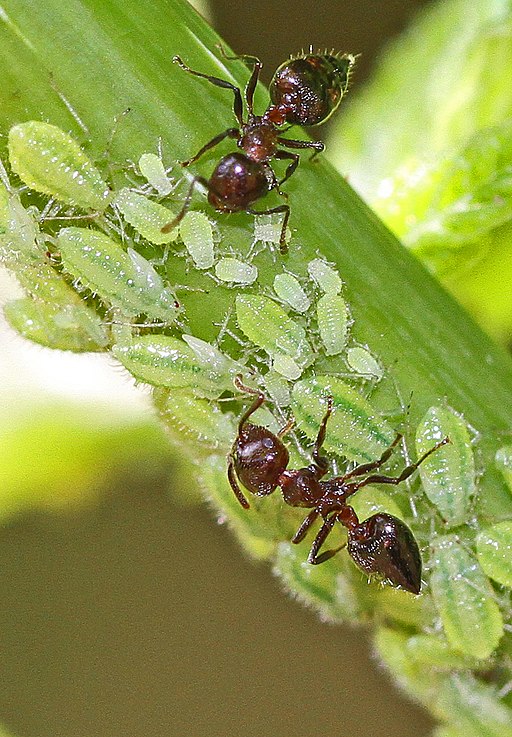 |
| Photo Credit: Judy Gallagher |
I have guides on how to organically control ants and aphids, so check them out if you need more information.
Cutworms
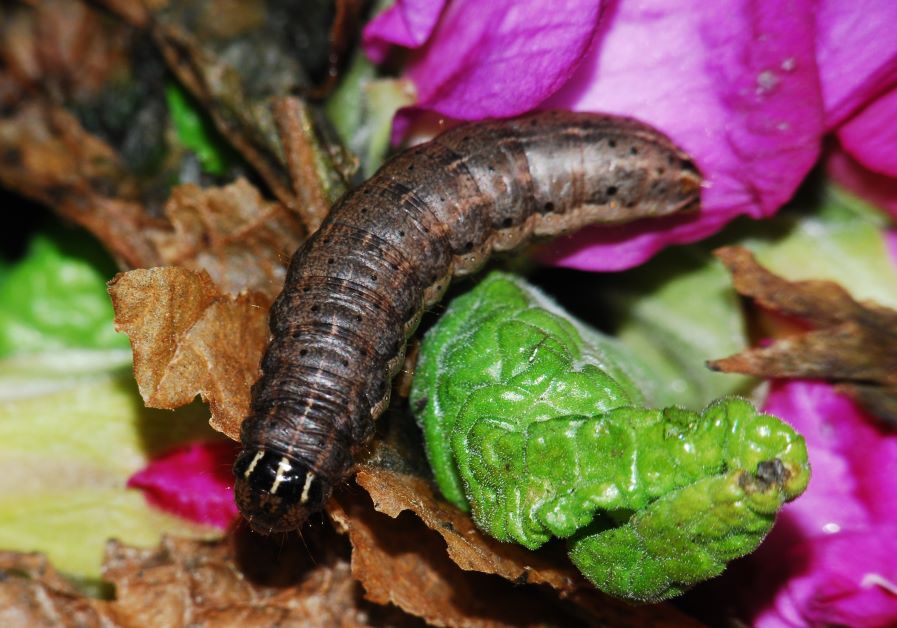 |
| Photo Credit: Brad Smith |
The best defense against cutworms is to turn your soil thoroughly with a hoe or shovel before planting. Because they’re easy to see, look for the caterpillars as your turn the soil and pick them out by hand.
You can also make a plant collar out of an empty toilet paper roll. Cut a toilet paper roll in half and put it around the bottom of your plant as a physical barrier. Cutworms can burrow, so make sure to punch it down into the soil a bit to make it harder for the pests to dig underneath it.
If all else fails, Montery BT is an organic, non-toxic spray that you can use against caterpillars and cutworms.
Beetles
 |
| Photo Credit: K-State OHC |
Spinosad is an organic spray that’s used to control beetles, and it’s is safe for pollinators as long as it’s dry. Only spray spinosad at night – this will give it time to dry while the bees are sleeping.
Slugs

Slugs will eat any foliage, they aren’t picky. This means that they’ll target your tomatillo if given the chance. If you see slugs in your garden, take a look at my guide to organic slug control for help getting rid of this slimy intruder.
Spider Mites
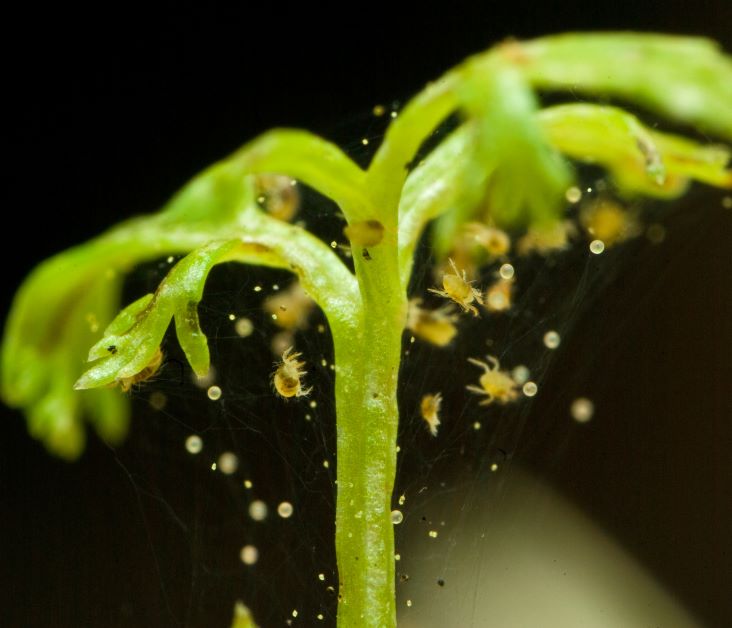 |
| Photo Credit: Jasper Nance |
You can try to stop a spider mite infestation with spinosad, but it’s important to take action at the first signs of an infestation. Spider mite populations explode quickly and spread to other plants via wind.
Another way to kill spider mites is to blast them with a hose. Put your nozzle on a medium-strong setting and spray the undersides of your leaves. This is also an effective way to kill aphids.
In the end, if spider mites get bad enough you may have to rip up your plant and throw it away. It’s depressing, but sometimes it’s the best choice to avoid the infestation from spreading.
Diseases
Powdery Mildew
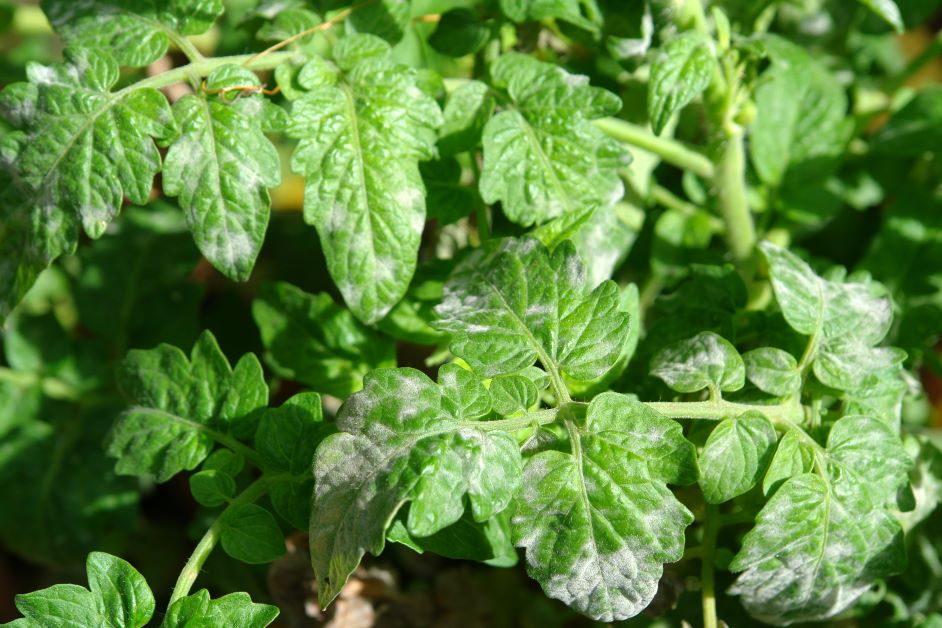 |
| Photo Credit: Scot Nelson |
- A fine layer of what looks like white dust on your leaves
- Brown, dried spots on your leaves that spread
- Dropping leaves
Prevention is the best way to tackle fungal disease. Always water your plant at the base to avoid getting water on the leaves, and prune when needed to help improve airflow.
Root Rot Disease
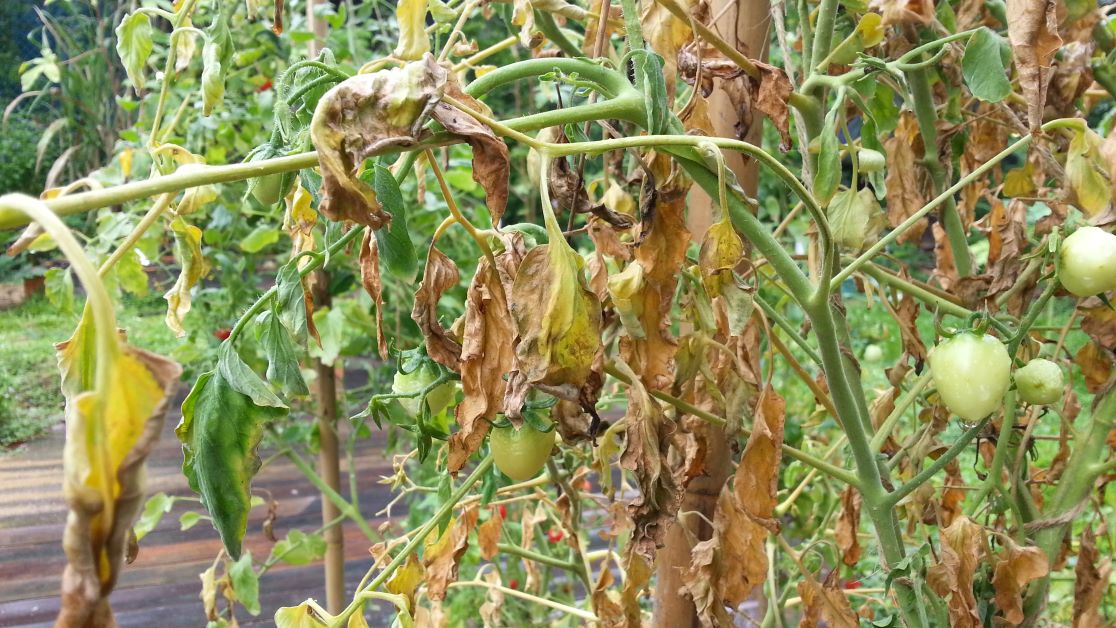 |
| Photo Credit: Jnzl’s Photos |
You’ll know you have root rot if your leaves turn yellow, then brown, and then drop off. Over time, your plant will (most likely) die.
Here are some tips to prevent root rot:
- If it’s been rainy in your area, skip watering your tomatillos.
- Always let your tomatillos dry out in between waterings.
- Make sure to plant your tomatillos in well-draining soil.
Unfortunately, there isn’t a treatment for root rot. If you suspect your tomatillo has root rot, then rip it up and throw it away.
You also need to sterilize your garden tools after working with plants that have root rot to avoid spreading it to other plants. Don’t plant anything else in that same area, at least for a little while. Root rot fungus can live in the soil for a long time, even without a plant to feed on. Let the soil dry out and stay dry for a couple of weeks before trying again.
How to Cook Tomatillo
You can eat tomatillo cooked or raw. The riper the tomatillo, the sweeter it is. Just barely ripe tomatillos are usually cooked and over-ripe tomatillos are eaten raw, just like a tomato.
One of the most popular ways to use tomatillo is in salsa verde. They’re also a common ingredient in stir-fries, curries, and stews.
First photo credit: Emma Doughty
Disclaimer: At no cost to you, I get commissions for purchases made through links in this post.

